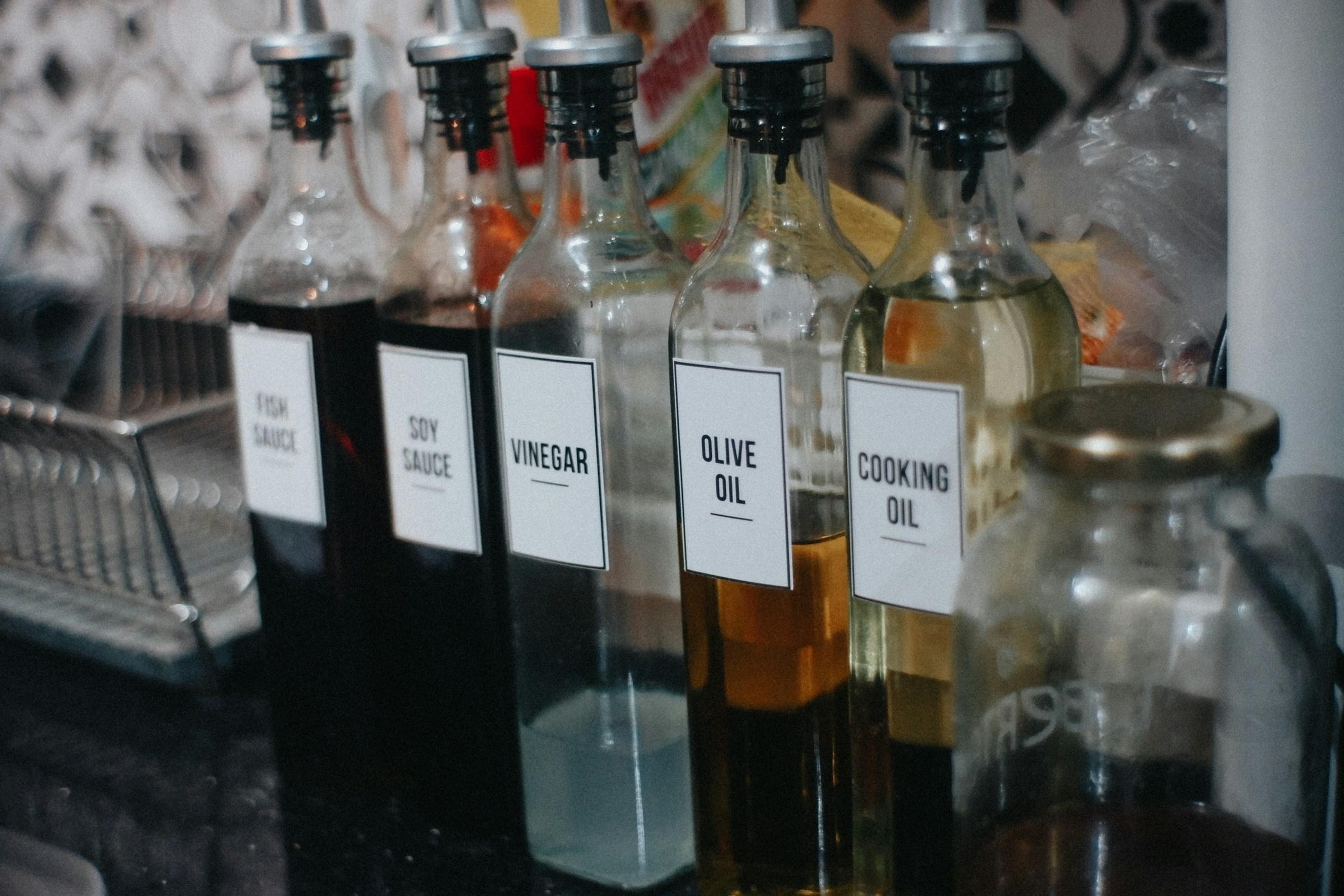ChatGPT said:
Palm oil is a familiar feature of home kitchens and restaurants, so people are often surprised when a bad meal or an accident at the stove leads them to search for the symptoms of palm oil poisoning. In ordinary culinary use, palm oil is not poisonous. Problems arise from the condition of the oil, the quantity consumed, the presence of contaminants, or the way the oil enters the body. A child who accidentally swallows from a bottle on the counter, a cook who inhales fumes over a scorching fryer, or a diner who eats food fried in degraded oil can all present with discomfort that feels alarming. An even more serious situation begins if oil slips into the airway during a choking episode. Understanding what the body is trying to signal can calm panic and guide sensible action.
The most common early picture is gastrointestinal. Nausea appears first, followed by a wave of queasiness that makes food and even plain water unappealing. Vomiting can arrive if the stomach lining is irritated, and that may be paired with cramping or a sharp ache high in the abdomen. The bowel often tries to move the irritant along, so loose stools or diarrhea can follow within hours. Many people also describe bloating and a bitter aftertaste that lingers after a meal cooked in reused oil. These symptoms are uncomfortable, but most improve with rest, small sips of fluid, and time. The signals that push the situation beyond mild are persistent vomiting, blood in vomit or stool, severe pain that builds rather than settles, and signs of dehydration such as a dry tongue and a notable drop in urination. When those appear, the sensible choice is to seek medical evaluation.
A second pattern emerges when dehydration becomes the main problem rather than the oil itself. After repeated vomiting or watery stools, the body’s fluid and electrolyte balance begins to tilt. Headache creeps in. Lightheadedness appears, especially on standing. Weakness turns small tasks into effort. The mouth feels dry, and a person who has not passed urine for several hours is giving a clear message that fluids are not keeping up. Oral rehydration solutions work well in most cases, but if someone cannot keep even small sips down over half a day, or looks drowsy or confused, professional care is the safer route.
The symptoms that deserve the most attention involve the airway and lungs. If exposure included choking or a sudden cough while drinking or eating something oily, a portion may have entered the airway. Oil in the lungs can trigger a chemical irritation sometimes called lipoid pneumonia. The body’s response does not always appear immediately. A persistent cough that worsens when lying flat, a sense of chest tightness, wheeze, or breathlessness can develop over hours to a couple of days. Fever may show up a little later as inflammation builds. Blue-tinged lips, fast breathing at rest, noisy breathing, or a child who is working hard to breathe are not symptoms to watch at home. They are emergency signs, and urgent care is necessary.
Less frequently, people encounter skin or allergy-type reactions. Itching, hives, or swelling of the lips can occur in those with sensitivities to components found in certain palm oil products. If this picture is joined by wheeze, hoarseness, or throat tightness, the concern shifts to a severe allergic reaction. In that case, an epinephrine auto-injector, if available, should be used while arranging emergency assessment. Oral antihistamines can ease itching, but they do not protect the airway in a severe reaction, so they should not delay urgent treatment when breathing is affected.
Eye exposure is another scenario, especially in busy kitchens. A splash of hot oil causes immediate pain, tearing, and the reflex to shut the eye tight. The first step is a long rinse with clean running water or saline. Fifteen minutes feels endless when the eye hurts, but it is the best way to flush the irritant. Contact lenses should be removed during flushing and left out. If pain remains strong after rinsing, or if vision stays blurred, an eye examination is the right next move.
Foodborne contamination complicates the story. Oil sold from unlabeled containers, recycled fryer oil, or oil stored in dirty bottles can carry microbial growth, residual cleaning chemicals, or breakdown products that irritate the gut. In those settings, the pattern resembles common food poisoning. Nausea and vomiting come on suddenly, watery diarrhea follows, and fever may accompany the cramps. When several people who shared the same meal become sick within a similar time window, a foodborne source becomes more likely. Dehydration becomes the main risk to manage at home. Clear fluids and oral rehydration help most people. Blood in the stool, severe pain, high fever, or confusion signal the need for medical care.
Repeated overheating and reuse change palm oil at a chemical level. Each high heat cycle breaks down triglycerides and increases compounds that the body finds irritating. People often notice a sharp smell, an acrid taste, and a sticky or foamy texture on the oil after too many uses. After eating food fried in poorly maintained oil, many report heartburn, a heavy stomach, and a scratchy throat. Sensitive individuals may start to cough. These symptoms usually pass, but they point to a simple preventive step. Replace the oil and lower the frying temperature to reduce breakdown.
Large quantity ingestion is uncommon in adults but happens in toddlers who mistake oil for juice if it is poured into a drink bottle. When the gut receives a heavy load of fat at once, stools can turn pale and greasy, and cramping becomes frequent. If these symptoms persist, or if a child seems unusually tired or irritable, a clinician should assess for dehydration and, in rare cases, for issues with digestion that might need support.
A practical response begins with removing the source and avoiding anything that increases risk. Do not induce vomiting. Do not give sedating medicines. Offer small, frequent sips of water or oral rehydration solution. If fluids stay down for a few hours, light food can follow. Alcohol and very fatty meals will aggravate the gut and should wait until recovery. If the exposure came from a product with a label, take it along to any clinic visit. If the oil was purchased loose, note the place and time. These details help doctors understand what happened and can assist health inspectors if a contaminated batch needs to be traced.
Certain red flags do not belong on a wait and see plan. Trouble breathing at any point, a new cough that began right after choking on oil, vomiting that prevents hydration, blood in vomit or stool, worsening or severe abdominal pain, sustained high fever, new confusion or fainting, and any eye pain or vision change that remains after proper rinsing should prompt prompt medical attention. Children and older adults are more vulnerable to dehydration and respiratory complications, so a lower threshold for care is wise.
Prevention is straightforward. Store oil in a cool, dark place with the cap firmly closed. Keep it away from sunlight and heat that accelerate rancidity. Strain oil after use, and retire it after a few fry cycles rather than pushing it to a cloudy, foamy end. Discard any oil that smells sharp or sour. Never decant cooking oil into containers that look like beverage bottles, because young children cannot tell the difference. In the kitchen, never leave hot oil unattended, and keep children well away from the stove. If you work around fryers or woks, use splash guards where possible and make sure ventilation is adequate. Lower, steadier temperatures and good airflow reduce both fumes and breakdown products that irritate the airway.
A final perspective helps to right-size the fear. The danger most people imagine is acute poisoning from a normal serving of food cooked in palm oil. That is not how the body usually reacts. The greater risks are aspiration into the airway, dehydration from vomiting and diarrhea, contamination from poor handling, and long term dietary patterns built on deep fried foods cooked in degraded oil. The first three require practical first aid and good judgment about when to seek care. The last one asks for cooking choices that favor baking, steaming, or air frying more often, and for careful oil maintenance when frying remains on the menu. When something goes wrong, clarity beats panic. Gut upset is common and usually settles. Breathing symptoms change the plan and call for speed. Hydration protects against a long, draining recovery. A well kept bottle of oil and a few safe kitchen habits prevent most scares before they start.
If you remember one idea, make it this. Recognizing the symptoms linked to palm oil exposure is less about memorizing a long list and more about learning to spot the patterns that matter. Stomach irritation and fatigue ask for fluids and rest. A cough after choking on oil demands medical care. Smart storage, moderate heat, and a little discipline about reuse keep your meals enjoyable and your family safe.














